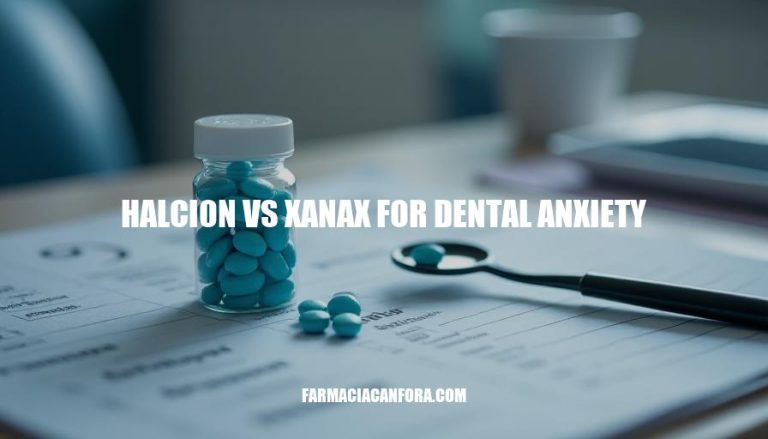


Managing dental anxiety is crucial for ensuring patients receive necessary dental care without undue stress. Halcion (triazolam) and Xanax (alprazolam) are two medications often used to alleviate this anxiety. Both belong to the benzodiazepine class and work by calming the central nervous system, but they differ in their onset, duration, and specific uses in dental settings. Understanding these differences can help patients and dentists choose the most appropriate option for a stress-free dental experience.
Halcion (Triazolam) and Xanax (Alprazolam) are benzodiazepines that alleviate dental anxiety by acting on the central nervous system (CNS). They enhance the effect of the neurotransmitter gamma-aminobutyric acid (GABA), which inhibits CNS activity.
Halcion is primarily used for its hypnotic effects, inducing sleep and reducing anxiety by slowing down brain activity. It causes drowsiness, muscle relaxation, and a sense of calm, making it easier for patients to undergo dental procedures.
Xanax is known for its anxiolytic properties, effectively reducing anxiety and panic by depressing CNS activity. It helps patients feel more relaxed and less apprehensive during dental visits.
Both medications can cause side effects like drowsiness, dizziness, and impaired coordination. They should be used under medical supervision to ensure safety and effectiveness.
Halcion (triazolam):
Xanax (alprazolam):
Halcion is faster-acting but shorter in duration, making it suitable for quick, intense relief during dental procedures. Xanax takes longer to kick in but provides extended relief, useful for broader anxiety management.
Halcion (Triazolam):
Xanax (Alprazolam):
Both medications should be used under strict medical supervision due to their potential for dependency and side effects.
When considering Halcion (triazolam) and Xanax (alprazolam) for dental anxiety treatment, it’s important to understand their side effects and safety concerns:
Both medications should be used under strict medical supervision, especially in a dental setting, to minimize risks and ensure patient safety.
Halcion (triazolam) and Xanax (alprazolam) are both benzodiazepines used to manage dental anxiety, but they have distinct profiles regarding dependency and withdrawal risks:
Both medications should be used under strict medical supervision to mitigate these risks.
Patient-specific factors influencing the choice between Halcion (triazolam) and Xanax (alprazolam) for dental anxiety include:
Medical History:
Potential Drug Interactions:
Anxiety Severity and Duration:
Halcion (triazolam) and Xanax (alprazolam) are benzodiazepines used to manage dental anxiety, but they have distinct profiles regarding dependency and withdrawal risks.
Halcion has a high risk of dependency due to its short half-life, leading to more frequent dosing, while Xanax also carries a high risk of dependency due to its longer half-life. Both medications should be used under strict medical supervision to mitigate these risks.
Patient-specific factors influencing the choice between Halcion and Xanax include medical history, potential drug interactions, and anxiety severity and duration.
Halcion is often preferred for short-term, intense anxiety, while Xanax may be more suitable for longer-lasting anxiety.
Both medications can cause side effects like drowsiness, dizziness, and impaired coordination, and should be used with caution in a dental setting to minimize risks and ensure patient safety.